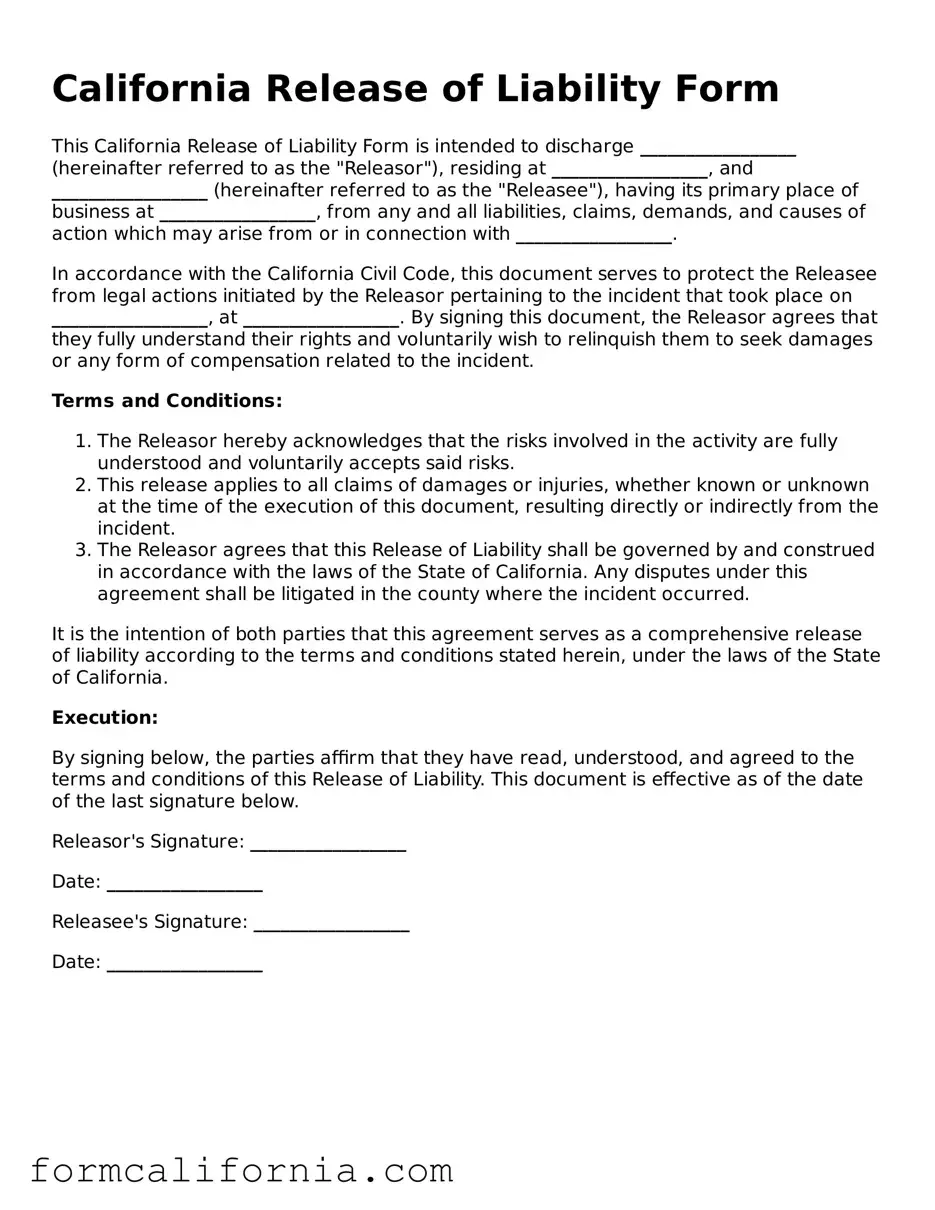California Release of Liability Form
This California Release of Liability Form is intended to discharge _________________ (hereinafter referred to as the "Releasor"), residing at _________________, and _________________ (hereinafter referred to as the "Releasee"), having its primary place of business at _________________, from any and all liabilities, claims, demands, and causes of action which may arise from or in connection with _________________.
In accordance with the California Civil Code, this document serves to protect the Releasee from legal actions initiated by the Releasor pertaining to the incident that took place on _________________, at _________________. By signing this document, the Releasor agrees that they fully understand their rights and voluntarily wish to relinquish them to seek damages or any form of compensation related to the incident.
Terms and Conditions:
- The Releasor hereby acknowledges that the risks involved in the activity are fully understood and voluntarily accepts said risks.
- This release applies to all claims of damages or injuries, whether known or unknown at the time of the execution of this document, resulting directly or indirectly from the incident.
- The Releasor agrees that this Release of Liability shall be governed by and construed in accordance with the laws of the State of California. Any disputes under this agreement shall be litigated in the county where the incident occurred.
It is the intention of both parties that this agreement serves as a comprehensive release of liability according to the terms and conditions stated herein, under the laws of the State of California.
Execution:
By signing below, the parties affirm that they have read, understood, and agreed to the terms and conditions of this Release of Liability. This document is effective as of the date of the last signature below.
Releasor's Signature: _________________
Date: _________________
Releasee's Signature: _________________
Date: _________________
